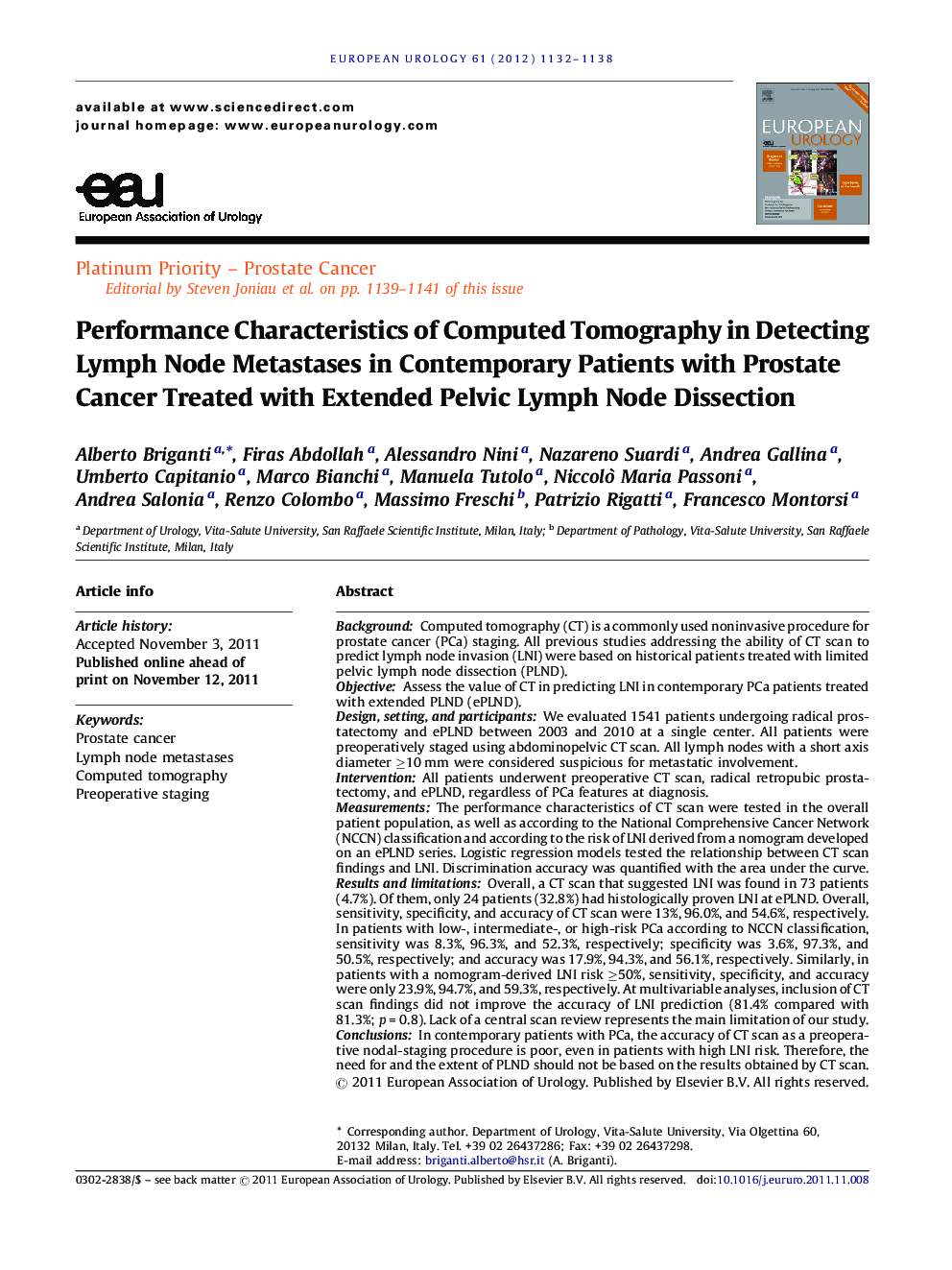| کد مقاله | کد نشریه | سال انتشار | مقاله انگلیسی | نسخه تمام متن |
|---|---|---|---|---|
| 3924099 | 1253092 | 2012 | 7 صفحه PDF | دانلود رایگان |

BackgroundComputed tomography (CT) is a commonly used noninvasive procedure for prostate cancer (PCa) staging. All previous studies addressing the ability of CT scan to predict lymph node invasion (LNI) were based on historical patients treated with limited pelvic lymph node dissection (PLND).ObjectiveAssess the value of CT in predicting LNI in contemporary PCa patients treated with extended PLND (ePLND).Design, setting, and participantsWe evaluated 1541 patients undergoing radical prostatectomy and ePLND between 2003 and 2010 at a single center. All patients were preoperatively staged using abdominopelvic CT scan. All lymph nodes with a short axis diameter ≥10 mm were considered suspicious for metastatic involvement.InterventionAll patients underwent preoperative CT scan, radical retropubic prostatectomy, and ePLND, regardless of PCa features at diagnosis.MeasurementsThe performance characteristics of CT scan were tested in the overall patient population, as well as according to the National Comprehensive Cancer Network (NCCN) classification and according to the risk of LNI derived from a nomogram developed on an ePLND series. Logistic regression models tested the relationship between CT scan findings and LNI. Discrimination accuracy was quantified with the area under the curve.Results and limitationsOverall, a CT scan that suggested LNI was found in 73 patients (4.7%). Of them, only 24 patients (32.8%) had histologically proven LNI at ePLND. Overall, sensitivity, specificity, and accuracy of CT scan were 13%, 96.0%, and 54.6%, respectively. In patients with low-, intermediate-, or high-risk PCa according to NCCN classification, sensitivity was 8.3%, 96.3%, and 52.3%, respectively; specificity was 3.6%, 97.3%, and 50.5%, respectively; and accuracy was 17.9%, 94.3%, and 56.1%, respectively. Similarly, in patients with a nomogram-derived LNI risk ≥50%, sensitivity, specificity, and accuracy were only 23.9%, 94.7%, and 59.3%, respectively. At multivariable analyses, inclusion of CT scan findings did not improve the accuracy of LNI prediction (81.4% compared with 81.3%; p = 0.8). Lack of a central scan review represents the main limitation of our study.ConclusionsIn contemporary patients with PCa, the accuracy of CT scan as a preoperative nodal-staging procedure is poor, even in patients with high LNI risk. Therefore, the need for and the extent of PLND should not be based on the results obtained by CT scan.
Journal: European Urology - Volume 61, Issue 6, June 2012, Pages 1132–1138